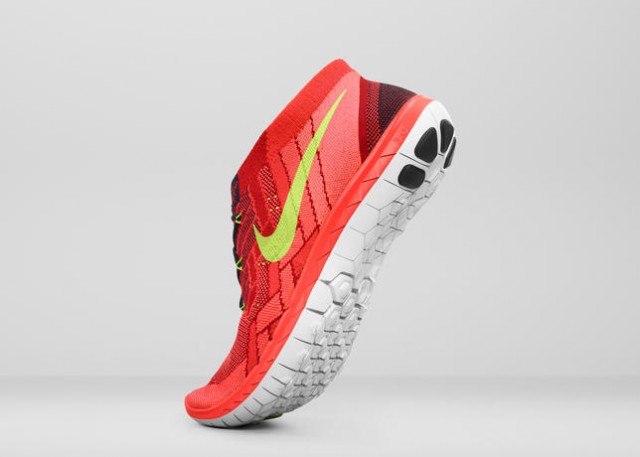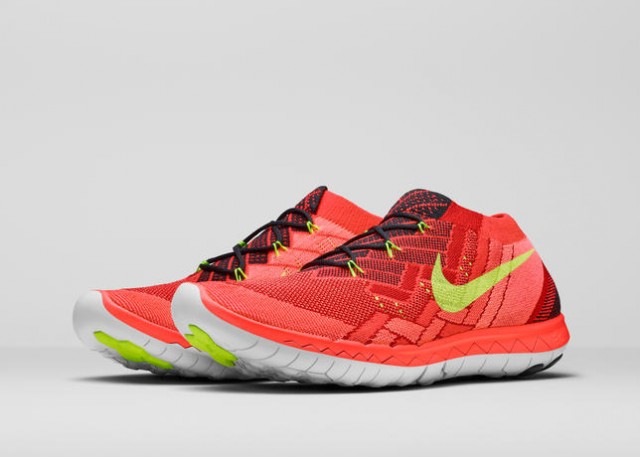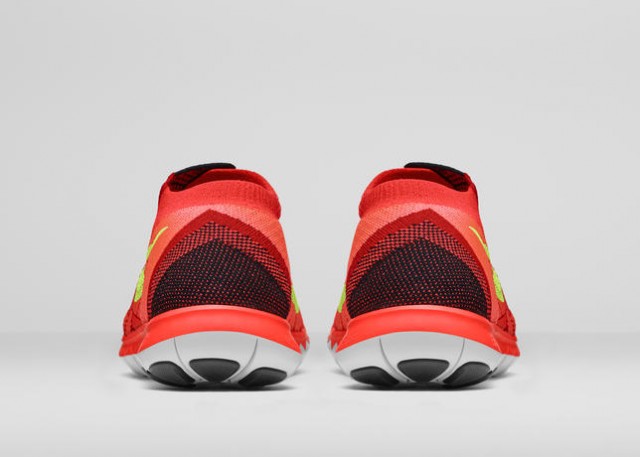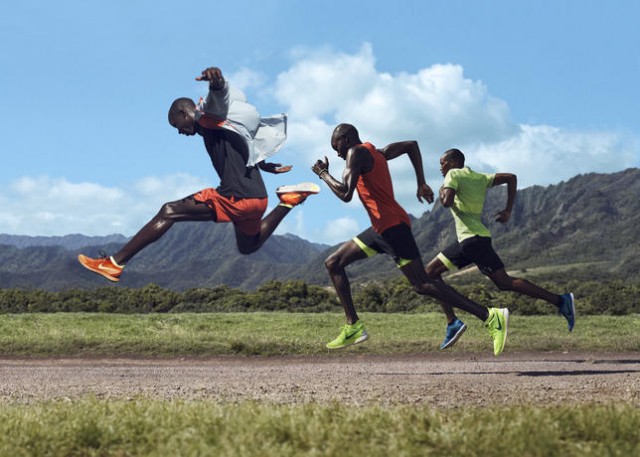
In the 11th year of the popular Nike Free franchise, Nike introduces three evolved running styles: the Nike Free 3.0 Flyknit, the Nike Free 4.0 Flyknit and the Nike Free 5.0. The new models take the next step toward harnessing the natural motion of a runner’s feet and body – not by adding, but by honing down to the design features that give runners a natural running experience.
The collection features redesigned uppers engineered to work holistically with the shoe’s natural flexibility. The ecosystem offers runners a progression of three natural ride options:
Nike Free 3.0 Flyknit: Nike’s most natural ride with a snug Flyknit upper and 4-millimeter heel-to-toe offset



Nike Free 4.0 Flyknit: A cushioned, natural ride with a contoured Flyknit upper and 6-millimeter offset



Nike Free 5.0: Nike’s most cushioned, natural ride with an engineered upper and 8-millimeter offset



The concept of Nike Free was born in 2001 after a legendary coach’s insights inspired designers to create footwear that mimicked the feel of barefoot training as well as offered important protection and support. In 2015 Nike Free designers have once again focused on the principle of less: eliminating layers, seams and bulk. The final product is all about the power of the foot — not the shoe.
Here, a look at why less is more with the new Nike Free running collection.
1. NATURALLY FLEXING SOLES

Nike Free takes a research-based, body-led approach to the sole that allows the foot to sit close to the ground and move as nature intended. Data shows that the foot doesn’t move in a perfectly straight line while running. Even though the body is moving forward linearly, the feet tend to roll slightly while striking the ground. The hexagonal flex grooves on the outsole of all three Nike Free running shoes provide a fuller range of motion, letting the foot adapt to the ground, while the Phylite foam offers lightweight cushioning.
2. SOCK-LIKE UPPERS

New features can sometimes mean added layers, seams and bulk – issues that often result in friction, more materials and a less flexible, natural fit. The Nike Free 3.0 Flyknit and the Nike Free 4.0 Flyknit have virtually seamless one-piece Nike Flyknit uppers that conform to the shape of a runner’s foot and offer support at the same time. Nike Flyknit technology allows designers to micro-engineer in areas of stretch, support and breathability exactly where runners need it.

The Nike Free 5.0 shed layers this year and now boasts a full bootie construction that delivers seamless comfort and a flexible, lightweight ride. The mesh material used on the upper and the no-sew overlays also contribute to the overall lightness and breathability of the shoe.

All three shoes feature Nike Flywire technology for lightweight, strong support around the midfoot and arch.
3. FEATHERWEIGHT DESIGN

Nike Flyknit technology is a prime example that less can be more and the quintessential upper to complement Nike Free shoes’ natural motion outsoles. The stretchy, featherweight, durable yarn hugs the shape of the foot and simultaneously lends flexibility and support. With a slightly looser weave than in previous models, the Flyknit uppers on the Nike Free 3.0 Flyknit and Free 4.0 Flyknit promote improved breathability.
Runners who choose the Nike Free 5.0 will also notice a lightweight shoe, with Nike Flywire technology, no-sew overlays and a lightweight mesh in the upper. Shaving slivers of weight adds up when calculated over the course of a miles-long run.
4. FORMFITTING HEEL SUPPORT

While some running shoes benefit from a structured, plastic heel counter on the back of the shoe, the Nike Free 3.0 Flyknit uses Flyknit technology to support the heel. The Nike Free 4.0 Flyknit uses a non-stretch yarn in the heel area to add even more stability and support to those who need it. Removing the structured heel counter frees up the runner’s natural gait and pares down weight.
5. LESS WASTE

Nike Flyknit technology doesn’t just erase weight from the shoe; the advanced manufacturing process also reduces waste. Since Nike Flyknit technology debuted in the Flyknit Racer in 2012, the innovative manufacturing process has reduced waste by nearly two million pounds – equivalent to about three times the weight of the world’s largest passenger jet. While shoe uppers are traditionally constructed from multiple materials cut and sewn together, Nike Flyknit technology knits strands of yarn into a nearly seamless upper to create a lightweight, form-fitting shoe that provides maximum athletic performance with minimal environmental impact.
Since Nike Flyknit technology debuted in the Flyknit Racer in 2012, the innovative manufacturing process has reduced waste by nearly two million pounds – equivalent to about three times the weight of the world’s largest passenger jet.
ENABLING NATURAL MOVEMENT

Nike designers don’t see Nike Free as a shoe made up of individual features. Instead, they’ve created an ecosystem in which each of the shoe’s attributes work in concert to enable the natural movement of the foot. The form, materials and technology of Nike Free summer footwear harmonize to achieve 360-degree natural motion.


